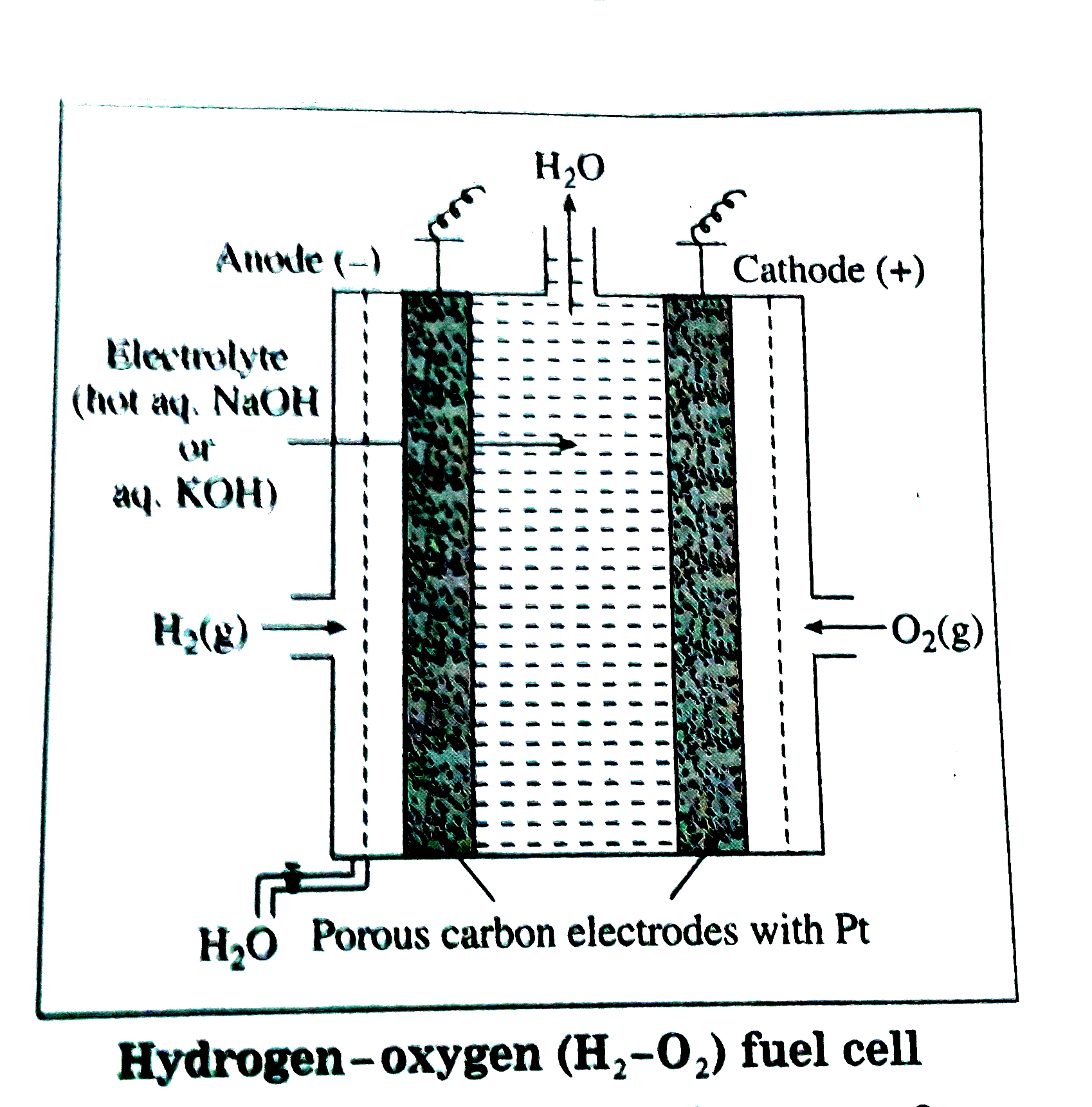Describe the construction and working of hydrogen -oxygen (H2−O2) fuel cell.
Text Solution
(A) Principle :
(1) The functioning of the fuel cell is based on the fact that the combustion reaction like 2H2(g)+O2(g)→2H2O(g) is exothermic redox reaction and can be used to produce electricity .
(2) The reactants of this fuel cell can be continuously supplied from outside, hence this type of galvanic cell can be used to supply electrical energy for a very long period.

(B) Construction :
(1) The fuel cell has porous electrodes with suitable catalyst since combustion of hydrogen is a slow reaction.
(2) Anode and cathode cosists of porous carbon rods impregnated with finely divided platinum which acts as a catalyst for the reactions.
(3) The electrolyte used is not aqueous KOH solution in wich porous anode and cathode carbon rods are immersed.
(4) H2 is continuously bubbled through anode while O2 gas is bubbled through cathode.
(C ) Working (cell reactions) :
(1) Oxidation at anode :
2H2(g)+4OH−(aq)→4H2O(l)+4e− (oxidation half reaction)
(2) Reduction at cathode :
O2(g)+2H2O(l)+4e−→4OH−(aq) (reduction half reaction)
(3) Net cell reaction : Addition of both the above reactions at anode and cathode gives a net cell reaction.
2H2(g)+O2(g)→2H2O(l) (overall cell reaction)
(D) Representation of the cell :
−Pt∣∣H2(g)∣∣NaOH(aq)(hot)∣∣O2(g)∣∣Pt+
E0cell=E0cathode−E0anode
=0.4−(−0.83)
=1.23V
(E) Advantages :
(1) The cell reactions do not cause any pollution.
(2) The efficiency of this galvanic cell is the highest about 70% as compared to ordinary galvanic cells.
(F) Drawbacks of H2l−O2 fuel cell :
(1) The cell requires expensive electrodes like Pt,Pd.
(2) In practice, voltage is less than 1.23 volt due to spontaneous reactions at the electrodes.
(3) H2 gas is expensive and hazardous .
(G) Applications :
(1) It was successfully used in spacecraft.
(2) It has potential applications in automobiles power generators for domestic and industrial uses.
|
Updated on:21/07/2023
Similar Questions
Describe the construction and working of Normal Hydrogen Electrode.
View SolutionEMF of an H2−O2 fuel cell
View SolutionDescribe the construction and working of a Voltaic cell briefly.
View SolutionDescribe the construction and working of the standard hydrogen electrode (S.H.E.) .
View SolutionHow does H2−O2 fuel cell operate?
View SolutionWhat are fuel cells ? Explain the electrode reactions involved in the working of H2−O2 fuel cell.
View SolutionThe overall reactions of a hydrogen -oxygen fuel cell is
View SolutionThe overall reactions of a hydrogen -oxygen fuel cell is
View SolutionDescribe the construction of a H2−O2 , fuel cell and the reactions H2O taking place in it.
View SolutionThe effciency of the hydrogen-oxygen fuel cell is about
View Solution

